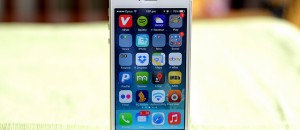Finance management apps are some of the most popular downloads in the App Store. My goal for this article is to cover a wide spectrum with this category, as I am covering apps that could not only generally manage your money but also could function as a bill reminder. The requirement to be considered in this category is to do either of these things, not necessarily both, though there are a few apps that can do both quite effectively.
In this review, there will also be a huge discrepancy between the top 3 (best in category, runner up, and honorable mention) and the “other alternatives”, as the latter require manual entry of finances. The top 3 apps require that you have online accounts set up for all of your financial institutions, which I understand is not necessarily a given at this point for some, but most people have moved in this direction to be able check their finances. The direct connections to your accounts will result in real-time financial data, which you cannot get in other alternative apps unless you are literally 100% accurate and diligent with manually adding information. I am assuming that the majority of users do not have the time or patience for doing that. It is also worth noting that all 3 of the top apps boast bank-level encryption and do not save anything on your physical iOS device, therefore your credentials and finances are completely safe. Each also has a 4-digit passcode which will have to be entered anytime the app is brought to the main screen of your device, which means you will have to re-enter it if you minimize the window and then open it again. In general, these apps have a ton of users and wouldn’t be in business if your data wasn’t safe.
This article is part of our Best Free iPhone Apps repository. Drop by to learn more about the best free apps across a variety of categories!
Table of Contents
Best Free Bill Reminder App
App Name: Mint.com Personal Finance – manage your money, budgets, expenses and bills
Developer: Mint.com
Download Size: 11.8 MB
Version Reviewed: 2.4.200
Requires: Compatible with iPhone, iPod touch, and iPad; iOS 5.0 or later
Pros
- Connects directly to your online financial accounts for real-time data
- Follows your bank, credit card, and mortgage data
- Allows for the entry of investments and retirement accounts
- Allows for the entry of physical property such as homes and automobiles
- Calculates your cash flow based on money earned and spent
- Automatically sorts your purchases into categories and suggests better ways to budget your money
- Will alert the user if you are over budget in any one category
- Will alert the user to large purchases or deposits
- Allows for manual entry of purchases (if needed)
- Bill reminders sent directly to you
- 4-digit passcode
- Supports nearly 16,000 providers
Cons
- Does not support connections to utility accounts (i.e. water, power, gas, etc.)
- Does not physically show upcoming bills (only on Web)
- Does not physically show your individual portfolio investments or analysis (only on Web)
Discussion
Mint.com is a big name in the world of personal finance. After it was purchased by Turbo Tax and Quicken in 2009, the company took off and currently services over 10 million users. The company’s iOS app is basically a miniature version of its website, as it contains many of the same important features, but also lacks a few that might interest users. The app itself has garnered many awards and universally known as the best financial app on the App Market.
Mint, which is how I will refer to the app itself from now on, has a nicely designed interface made up of a breakdown of your accounts, budgets, cash flow, alerts, advice, and investments. When you start using the app, there are two main areas of importance, security and getting your personal financial information entered into the app. The 4-digit code is easily set up, as it is in all apps that utilize it, but when it is time to enter your accounts, make sure you have all your important credentials in front of you. Mint will ask for the user name and password of every online account you want to grab financial information from. If you don’t have an online account for one of these institutions, then you need to go their website and create one. After some time, you will see that entering your bank, credit card, loan, investment, and retirement accounts into Mint is usually quick and easy, without many bugs. I have found that other apps tend to be more buggy than Mint in this process, which is one of the reasons why it continues to be top in its app genre. Once all of your info is entered, that is when Mint’s technology takes over.
Please realize that Mint concentrates more on your net worth and smart managing of finances than anything else. Mint.com is quite well-rounded and covers most financial aspects very well, but all of that doesn’t necessarily translate to the app. Well what does Mint do well? It does a tremendous job at showing all of your accounts and corresponding activity on them. You even have the option of adding notes to any one activity on a single account. So let’s say I made a final payment to the power company before moving and wanted to add a note about the payment closing the account. Mint will allow me to do this. In reality, when I want to check any type of account activity, Mint is my go-to app for that.
Mint also does a great job when it comes to budgets, cash flow, and alerts. The app automatically grabs all of your credit card purchases and throws them into a computer generated monthly budget calendar. It is important to note that this budget calendar almost always needs to be adjusted according to your own preference, but it is great feature nonetheless. Once it is adjusted to your liking, Mint will alert you any time you go over budget in any one area/category. So that just means that you will have to sacrifice in another area for that month. Please also realize that Mint’s categorizing is not full proof either, so always keep an eye out for errors in case you are heavily relying on the app for budgeting purposes. It usually is on the money though. Mint also does the same breakdown of your cash flow and where it is going.
Mint is indeed a great app, but there are some negatives. While Mint.com has detailed information on upcoming bills and individual investment portfolios, that has yet to makes its way to the app. I am not overly concerned about investments, as you can get that in many other places, but the lack of concrete bill information does concern me a bit. Mint does say that it “manages your bills”, but probably not the way you would think. The app does send alerts when your bills are due, but you can’t actually see your bills in the app itself. It also does not support entering of utility bills either, which is big negative from my point of view. If you contact Mint about this, they will say that you can manually enter bills if you like, but to me, that is not the solution. In reality, does anyone really want to use a bill reminder system that only helps remind you have of some of your bills?
As a whole, Mint does indeed lack a bit in the bill managing department, but it is the ideal app for monitoring accounts and keeping within a budget. That is why Mint is the best free financial management app for the iPhone.
Runner Up
 App Name: Pageonce – Money & Bills
App Name: Pageonce – Money & Bills
Developer: Pageonce, Inc
Download Size: 19.0 MB
Version Reviewed: 5.51
Requires: Compatible with iPhone, iPod touch, and iPad; iOS 3.0 or later
Discussion
Pageonce – Money & Bills is solid alternative to Mint as it boasts over 7 million users and supports more than 6000 providers. The app, unlike Mint, concentrates more on the bill management side of things. You won’t find many of the money management features such as automatic categorizing of credit card purchases or carefully designed budgeting plans. Pageonce also is not as concerned with your net worth, so it does include the ability to track any of your physical property. What it does do, though, is handle bills as well as any other app on the App Market.
The main page of Pageonce contains category information on your cash, investment, and credit card accounts. There are also advertisement categories that offer credit cards and sell credit score/protection software. Ads are rarely enjoyable to have, but the way they are incorporated make them barely noticeable. The key category is bills, where you can add all the same financial institutions as Mint (i.e. bank, credit card, loans), but also allows you to add your utility accounts. The inclusion of utilities is probably one of the reasons that Pageonce has been able to gain so many users, is that it allows you to handle ALL of your bills in once place. So, for example, I own a home and currently have my mortgage, cable, power, gas, water, disposal, credit card, and cell phone bills all being monitored by Pageonce. The app also conveniently has two different bill views in which you can list your bills in order sorted by due date or you can see a full iOS calendar view of your due dates.
The last feature of Pageonce worth mentioning, that might convince some folks to use it over Mint, is the unique bill pay feature. Yes, you can actually pay your bills directly from Pageonce. What is the catch? Well Pageonce actually charges $0.30 per transaction to pay a bill. So what benefit is it to pay from this app besides simple convenience? Pageonce actually allows you pay using your credit card, which could be a big deal for those of us with excellent rewards on our cards. All you need is to do is some simple calculations and you will find whether the bill pay in Pageonce works for you or not.
It is worth noting that I have intermittent connection problems with the syncing of my online accounts in Pageonce. I often joke with my wife that I see the dreaded exclamation point in my nightmares, because the punctuation is used to symbolize that a connection needs fixing. I don’t pretend to understand how difficult it must be to keep track of changing websites and encryption, but I have never had an issue with Mint. I also don’t see as many issues with Manilla, which is the next app I will review.
In general, if you are looking for solid bill management app and you don’t have a lot of budgeting concerns, then Pageonce might be the app you choose over Mint.
Honorable Mention
App Name: Bills & Accounts Manager – documents, travel, money & household organizer – Manilla
Developer: Manilla LLC
Download Size: 2.2 MB
Version Reviewed: 1.1.4
Requires: Compatible with iPhone, iPod touch, and iPad; iOS 4.3 or later
Discussion
Manilla – Bills & Accounts Manager is very much like Pageonce, though it only carries around half (3,000) of the providers. The app concentrates completely on bill management/reminders and does it very well. It does its job so well, that I prefer this app over Pageonce for my personal needs. But that doesn’t change the fact that Pageonce offers more features and supports more providers, which is why Manilla lands in the Honorable Mention category.
The Manilla user interface is quite clean and user friendly. All of your synced online financial accounts are present in the account tab, each of which is click-able to show a summarized bill. You also have the option to see a PDF copy of actual bill or even be sent to the provider’s website to pay the bill. To be clear, this is not a bill pay feature, but rather a link to the provider’s website, where you could hypothetically log in and pay the bill there. The bill pay feature is a big advantage that Pageonce has over Manilla, if that is important to you.
The important section for Manilla users, once you have all of your bills entered, is the reminder tab. This is where Manilla lists all of your bills who have due dates that are coming due soon. You can see it in list format or in the standard iOS calendar view. Also, the number of unpaid bills in this category will always show up as the badge on the Manilla app icon on your iPhone screen. So you will always know how many bills need to be paid soon. And going even further, if you forget to pay a bill and it comes within 7 days of being due, you will get a push notification from Manilla. Either way, when the bill is eventually paid, Manilla has a very useful feature lacking in Mint or Pageonce, where you can mark the bill as paid. This is important because between the length of time it takes banks to send out bill pay checks and amount of time it takes companies to process your check, it could take weeks. Meanwhile, apps like Pageonce will start to tell you that your bill is overdue, when you know you have paid it. This “mark as paid” feature eliminates the annoyance of seeing overdue warnings that are untrue.
On a personal note, I use Mint and Manilla for my financial needs. I utilize Mint mainly to follow my budget, investments, and my individual credit card purchases. I then use Manilla to strictly keep track of my bills, because it is simple and supports all of my online providers. I also have fewer connection issues with Manilla than Pageonce, but that could be just due to the specific accounts that I use. I suggest that users try out all three and settle on the one or two that fit the best for you.
Other Alternatives
- Bills ~ on your table HD
- MoneyPad? – Integrated Money Manager
- Pocket Expense Personal Finance – Account Tracker, Budget Planner and Bills
- Bills Monitor Free – Bill Manager & Reminder

 Email article
Email article





